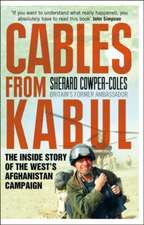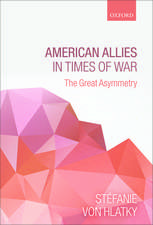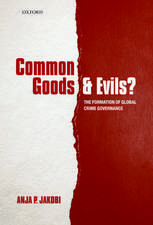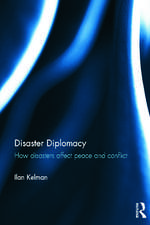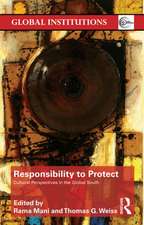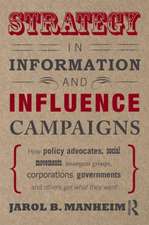Strategic Public Diplomacy and American Foreign Policy: The Evolution of Influence
Autor Jarol B. Manheimen Limba Engleză Paperback – sep 1994
The first systematic analysis of the growing foreign public relations industry in the U.S., this remarkable text traces the impact that the political image management of other nations has had on the American foreign policy agenda. Documenting the evolution of these campaigns in both scale and sophistication, this book includes an analysis of the Justice Department's foreign agent registration records, numerous interviews with journalists, consultants, and key government officials, and a systematic assessment of media content to gauge the effectiveness of these attempts at news management. The author presents and tests elements of a general model of agenda-related communication effects, presenting case studies that illustrate the extent to which the American media are saturated with foreign diplomatic messages, including the recent effort of the Kuwaiti government-in-exile to influence public opinion in the U.S. during the Gulf War, and concludes with an inventory and discussion of the issues raised by the export of the knowledge-base and skills underlying new, sophisticated communication strategies now being employed on behalf of foreign interests. Based on fifteen years of exhaustive research, this book is ideal for courses in foreign policy, media, and politics.
Preț: 683.90 lei
Preț vechi: 888.17 lei
-23% Nou
Puncte Express: 1026
Preț estimativ în valută:
130.91€ • 142.24$ • 110.03£
130.91€ • 142.24$ • 110.03£
Carte tipărită la comandă
Livrare economică 21 aprilie-05 mai
Preluare comenzi: 021 569.72.76
Specificații
ISBN-13: 9780195087383
ISBN-10: 0195087380
Pagini: 224
Ilustrații: line figures, tables
Dimensiuni: 140 x 216 x 13 mm
Greutate: 0.29 kg
Ediția:New
Editura: OXFORD UNIV PR
Locul publicării:New York, United States
ISBN-10: 0195087380
Pagini: 224
Ilustrații: line figures, tables
Dimensiuni: 140 x 216 x 13 mm
Greutate: 0.29 kg
Ediția:New
Editura: OXFORD UNIV PR
Locul publicării:New York, United States
Descriere
Strategic public diplomacy, once commonly called propaganda, has existed since the twelfth century, when Richard I, crusading sovereign of England, plucked the eyes from his prisoners and returned them to his arch-rival Saladin—an unmistakable message intended to mold the image that Richard's foreign enemies had of him. Although their methods have grown more sophisticated and gentrified since the Middle Ages, the goal of governments employing strategic publicdiplomacy has remained essentially the same: to influence public or elite opinion in a foreign country for the purpose of turning the foreign policy of the target country to advantage. The first systematic analysis of the growing foreign public relations industry in the U.S., this remarkable text traces the impact that the political "image management" of other nations has had on the American foreign policy agenda. Documenting the evolution of these campaigns in both scale and sophistication, this book includes an analysis of the Justice Department's foreign agent registration records, numerous interviews with journalists, consultants, and key government officials, and asystematic assessment of media content to gauge the effectiveness of these attempts at news management. The author presents and tests elements of a general model of agenda-related communication effects, presenting case studies that illustrate the extent to which the American media are saturated withforeign diplomatic messages, including the recent effort of the Kuwaiti government-in-exile to influence public opinion in the U.S. during the Gulf War, and concludes with an inventory and discussion of the issues raised by the "export" of the knowledge-base and skills underlying new, sophisticated communication strategies now being employed on behalf of foreign interests. Based on fifteen years of exhaustive research, this book is ideal for courses in foreign policy, media, andpolitics.

